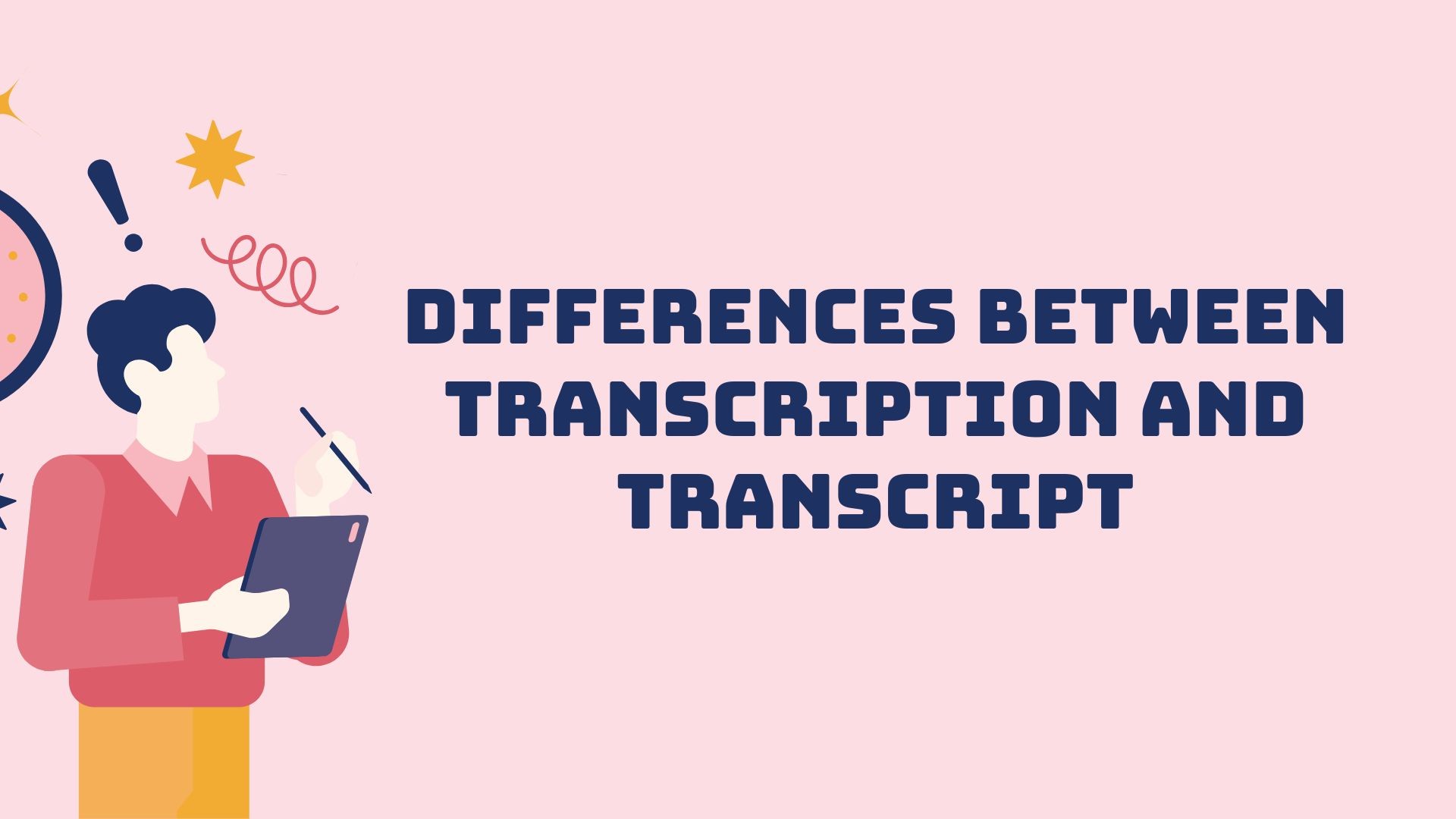Si alguna vez ha trabajado con contenidos de audio o vídeo, es posible que se haya topado con los términos transcripción y transcripción. Aunque están estrechamente relacionados, no son intercambiables. Comprender el diferencias entre transcripción y transcrito es esencial, sobre todo si te enfrentas a tareas como la creación de notas para reuniones, la investigación académica o la reutilización de contenidos.
En este blog, aclararemos la distinción entre transcripción y transcripción, explicaremos cómo se complementan y exploraremos cómo herramientas como VOMO AI simplificar el proceso de creación y trabajo con ambos.
¿Qué es la transcripción?
Transcripción se refiere al proceso consiste en convertir el lenguaje hablado de una grabación de audio o vídeo en texto escrito. Este proceso puede hacerse manualmente, escuchando el audio y escribiéndolo, o automatizarse con herramientas de inteligencia artificial.
Características principales de la transcripción:
-
Orientado al proceso: La transcripción implica escuchar activamente, analizar y convertir el habla en texto.
-
Formatos admitidos: Se aplica a contenidos de audio o vídeo, como entrevistas, reuniones, conferencias o podcasts.
-
Tipos de transcripción:
- Transcripción literal: Captura cada palabra, relleno y enunciado (por ejemplo, "um", "uh").
- Transcripción limpia: Omite rellenos y discursos irrelevantes para mayor claridad.
- Transcripción resumida: Se centra en puntos clave, decisiones o temas en lugar de una conversión palabra por palabra.
Herramientas de transcripción:
La transcripción manual lleva mucho tiempo, por lo que la mayoría de la gente utiliza herramientas basadas en IA como Otter.ai, Sonix o VOMO AI para automatizar el proceso y garantizar la eficacia.
¿Qué es un expediente académico?
A transcripción es el texto final escrito que se produce tras el proceso de transcripción. Considérelo el resultado final: un documento pulido que recoge el contenido hablado en forma de texto.
Características clave de un expediente académico:
-
Orientado a los resultados: Una transcripción es el producto tangible resultante de la transcripción.
-
Utiliza: Las transcripciones se utilizan mucho en procedimientos judiciales, investigaciones académicas, subtítulos de vídeo, podcasts y reuniones de negocios.
-
Formatos:
- Transcripción en texto plano: Contiene sólo las palabras habladas.
- Transcripción mejorada: Incluye marcas de tiempo, identificación del locutor y anotaciones específicas del contexto.
Por ejemplo:
- Transcripción: Proceso de conversión en texto de la grabación de una entrevista.
- Transcripción: El documento que contiene el texto de la entrevista.
Principales diferencias entre transcripción y transcripción

Por qué es importante entender la diferencia
Saber distinguir entre transcripción y transcripción le ayudará:
1. Elegir las herramientas adecuadas
Si necesita ayuda para convertir de audio a textobusca herramientas de transcripción. Si trabajas con el documento terminado, céntrate en herramientas para editar y organizar transcripciones.
2. Racionalizar los flujos de trabajo
Separar el proceso de transcripción del resultado de la transcripción permite optimizar cada paso, como automatizar la transcripción y pulir las transcripciones manualmente.
3. Mejorar la comunicación
Entender la diferencia garantiza una comunicación clara cuando se colabora con compañeros de equipo, clientes o proveedores de servicios.
Cómo VOMO AI Gestiona la transcripción y las actas
Si buscas una solución todo en uno para gestionar tanto la transcripción como la creación de transcripciones, VOMO AI es la herramienta ideal.
1. Transcripción automática
VOMO AI utiliza la IA avanzada de Whisper para transcribir audio con alta precisiónincluso en entornos ruidosos o con contenidos multilingües.
2. Transcripciones pulidas
La aplicación genera transcripciones listas para usar, con identificación del orador y formateo automático, lo que le ahorra tiempo de edición.
3. Resúmenes inteligentes
Además de las transcripciones, VOMO AI crea Notas inteligentes-resúmenes que condensan la transcripción en puntos clave y perspectivas prácticas.
4. Soporte multilingüe
VOMO AI permite la transcripción y la generación de transcripciones en más de 50 idiomas, para usuarios de todo el mundo.
5. Productos compartibles
Las transcripciones pueden exportarse o compartirse mediante enlaces, lo que facilita la colaboración.
Cuándo centrarse en la transcripción frente a la transcripción
Centrarse en la transcripción Si:
- Estás convirtiendo contenidos de audio o vídeo en texto.
- Necesitas herramientas que puedan gestionar el proceso de transcripción con eficacia.
Concéntrese en la Transcripción Si:
- Estás editando o analizando el texto final.
- Hay que extraer del texto información práctica.
Aplicaciones reales
1. Reuniones de trabajo
- Utilice la transcripción para convertir las grabaciones de las reuniones en texto, y las transcripciones para compartir los puntos clave con los miembros del equipo.
2. Investigación académica
- Transcriba las entrevistas o los debates de los grupos de discusión y analice las transcripciones en busca de patrones o temas.
3. Creación de contenidos
- Convierte grabaciones de podcasts en transcripciones para entradas de blog o subtítulos.
4. Productividad personal
- Grabe sus pensamientos o ideas y, a continuación, transcríbalos y organícelos en planes procesables mediante transcripciones.
Reflexiones finales
En diferencias entre transcripción y transcrito radican en sus funciones dentro del proceso de conversión de audio en texto. La transcripción es el acto de transformar el habla en texto, mientras que la transcripción es el producto acabado que se puede utilizar para analizar, compartir o consultar.
Herramientas como VOMO AI facilitan la gestión de ambas tareas, ofreciendo una transcripción precisa, transcripciones de alta calidad e incluso funciones avanzadas como el resumen.
¿Está listo para simplificar su flujo de trabajo de transcripción? Pruebe VOMO AI hoy mismo y disfrute de una transcripción y creación de transcripciones sin problemas.
